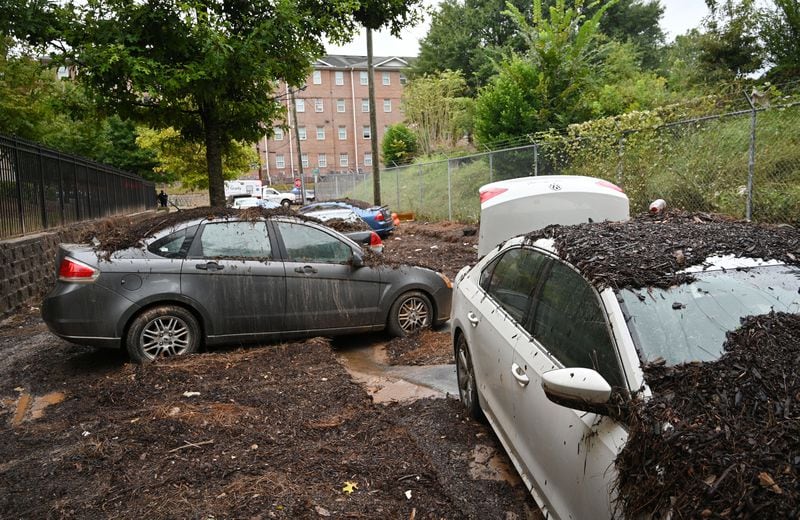Experts say thunderstorms like the ones that drenched parts of Atlanta on Thursday afternoon, creating localized flooding that swamped the Atlanta University Center, a church and parking lots, are not that unusual this time of year.
So what turned a fairly typical late summer storm into a dangerous flood event? In short, humans have altered the environment the storms are occurring in, scientists say.
Credit: HYOSUB SHIN / AJC
Credit: HYOSUB SHIN / AJC
Global average temperatures have risen by roughly 2 degrees Fahrenheit since 1880. Scientists have known for years that a warmer atmosphere can hold more water vapor, producing storms that can dump more rain in a short period of time.
Parts of Atlanta may have received three inches of rain in an hour, according to preliminary estimates from the National Weather Service. Over the last 30 years, federal data shows, the city has averaged about 3.8 inches for the entire month of September.
Data from a water gauge in Proctor Creek to the northwest of downtown shows water levels rose 10 feet in less than an hour as the storm passed through Thursday afternoon.
Some of the worst flooding occurred in downtown Atlanta, plus neighborhoods to the south and west of the city’s urban core. Those areas are packed with more concrete, buildings and other impervious surfaces than the rest of the city and fewer trees and greenspaces that can help absorb runoff.
When heavy rain falls on pavement, it can quickly overwhelm stormwater drainage systems, turning roads and small creeks into rivers, said Marshall Shepherd, the director of the University of Georgia’s Atmospheric Sciences Program.
Atlanta’s storm and others like it show that cities need to prepare for more intense deluges, Shepherd said.
”We saw the same thing in New York after Hurricane Ida,” he said, referencing the 2021 storm that caused deadly floods across the Northeast. “The stormwater design and infrastructure just isn’t prepared for this.”
A note of disclosure
This coverage is supported by a partnership with 1Earth Fund, the Kendeda Fund and Journalism Funding Partners. You can learn more and support our climate reporting by donating at ajc.com/donate/climate/
About the Author







